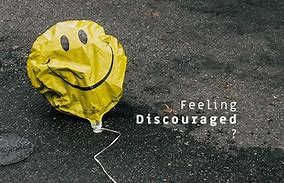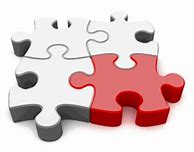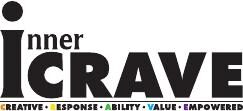
Fear
- We all know what fear feels like
- Probably the most common limiting emotion
- Not only do we fear new things, we also feel fear in addition to other negative emotions.
- We feel guilt, and we are afraid to feel the guilt
- We feel pain and we are afraid to feel the pain
- We feel fear and we are afraid to feel fear.
- (worrying about your worries – panic attack)
FEAR – False Expectations Appearing Real
- For the most part, what we fear is not real – it is merely our mind imagining something awful that has not yet happened. “Fear is the pain arising from the anticipation of evil” – Aristotle
- Seldom do we do the thing we fear, so we never discover if our projection of disaster was accurate. In fact, when we don’t do the thing we are afraid of, we breathe a sigh of relief as though it actually would have taken place. “That was a close one!” we say, even though we never actually got close to anything but a string of our own negative thoughts.
- One of the great joke s of existence. When people take the courage to journey into the center of their fear, they find – nothing. It was only many layers of fear, being afraid of itself.
- When unreal fears become extreme, it’s known as paranoia.
Anytime we let unreal fears (and that includes untested fears) keep us from moving toward our dreams, it is a form of madness. For most, the insanity of fear only produces discomfort and inaction. And more fear.
Guilt
- Guilt is the anger we feel toward ourselves when we do something “wrong.”
- It is the remorse – the shame, the regret – we feel at having done something different.
- We feel so bad we promise ourselves, “I’ll never do that again!” even if it’s the very thing we need to do, over and over.
- Many of us have irrational beliefs that we should not be too successful.
- “Who do you think you are, someone special?”
- “What’s wrong with the way things are? You have no appreciation.”
- “Why can’t you fit in? Why do you always have to do it your way? Can’t you learn to cooperate?
- Fear and guilt are felt in the area of the stomach
Unworthiness
- Unworthiness tells us we’re undeserving, not good enough, inadequate, and fundamentally deficient.
- “Don’t try it, Don’t even think about it.”
- We act as if it might be true, which eventually convinces us that it must be true.
- Otherwise why would we spend so much time pretending we’re good and pretending we’re happy and pretending we’re worthy?
- We’ll quickly abandon the thought of fulfilling a dream if it means a momentary calming
- Unworthiness can destroy relationships
- When we don’t feel worthy we can’t love ourselves
- All the games we play to cover unworthiness – insincere, phony, and deceptive
- Unworthiness resides in the area of the solar plexus – an area below the breast bone
- Some Eastern traditions call this the canter of Chi, a fundamental point for focusing energy and moving ahead in life
- Unworthiness inhibits that energy
- Some Eastern traditions call this the canter of Chi, a fundamental point for focusing energy and moving ahead in life
“You can have anything you want, you just can’t have everything you want.”
Hurt Feelings
- Hurt feelings are the times we have let ourselves down.
- A common “cover-up” for hurt is anger
- We blame whatever or whoever let us down, and we get steamed. (How dare you!”)
- Some people have anger as the automatic response to disappointment.
- A common defense against hurt feelings is depression.
- Beneath hurt is caring. The depth of the hurt indicates the depth of the caring.
- When anger covers the hurt, we say, “I don’t care about them; I hate them.” That’s part of caring too.
Discouragement
- Discouragement is the result of all this fear, guilt, unworthiness, hurt feelings and anger.
- It promotes inaction, and inaction guarantees failure – a life of not living our dreams
Fight or Flight Response
- Human beings as a species have an in-built, automatic, biological response to perceived danger: to fight like hell or to run like hell.
- In the survival-of-the-fittest sense, we are the offspring of the fittest.
- For the most part, the fittest were the ones who could fight the fiercest or run the fastest – or both (preferably at the same time). We inherited that. It’s genetic
- The emotion of fight is anger; the emotion of flight is fear.
The comfort zone knows us intimately and hits us at our weakest point. It wouldn’t dream of using an excuse we could see through. It uses the reasons we find reasonable, the rationales we find rational (the rational lies), the realizations we find most real (real lies). It takes our greatest aspirations and turns them into excuses for not bothering to aspire.

Resource: Reintegrate
restore to unity
Emotion is energy in motion
People often want to “get rid of” a “negative” emotion (fear, unworthiness, etc.) before attempting something new. That’s the same thing as saying, “I want to get rid of some of my energy.”
Fear, guilt, unworthiness, hurt feelings and anger are in fact tools.
- Tools are neutral – they can be used either for us, or against us.
- A knife can be used to heal or to hurt.
- A hammer can be used to build or to destroy.
- It is not the tool itself, but the way the tool is used that determines its benefit or detriment.
- Using these as allies in the journey toward our dreams is not difficult. It is a matter of understanding their true use and function
- They are diamonds in the rough. They’re valuable now, and with a little cutting and polishing, they become priceless.
- Fear is the energy to do our best in a new situation
- Guilt is the energy for personal change
- Unworthiness keeps us on track
- Hurt feelings remind us how much we care
- Anger is the energy for change
- Discouragement reveals our courage
“It’s all right to have butterflies in your stomach. Just get them to fly in formation.” – Dr. Rob Gilbert
craving and resource from “DO IT! – Let’s get of our buts” – by John-Roger and Peter Mcwilliams

